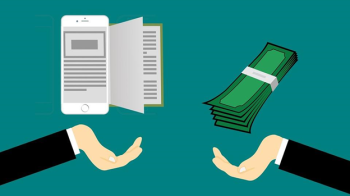The term ID stands for Individualized Education Program. This is a program that provides students with an education tailored to their needs, and helps them reach their potential. It has been used as a tool in many cases to help special needs children develop social skills, communication skills, and other life skills necessary for success.
This Video Should Help:
What is ID?
The Individuals with Disabilities Education Act (IDEA) is a federal law that guarantees all children with disabilities the right to a free appropriate public education. The term ufffdIDEAufffd is often used to refer to the Individuals with Disabilities Education Act as a whole, but the ufffdIDEAufffd also refers to the specific parts of the law.
Part B of the IDEA addresses educational services for children ages 3-21, while Part C covers early intervention services for infants and toddlers with disabilities and their families.
The acronym ufffdIDufffd is often used to refer to intellectual disabilities, but it can also be used as an abbreviation for other disabilities or diagnoses, such as multiple disabilities, vision impairments, hearing impairments, and physical disabilities. In California, the acronym ufffdIDufffd is used in CalPADS (the California Longitudinal Pupil Achievement Data System) and STEP (StudentTracker for Excellence and Progress), two data systems that track student information from early childhood through postsecondary education.
The term ufffdIDufffd may also be used informally to refer to an educational disability category. For example, a student may be classified as ID/DD (intellectually disabled/developmentally disabled), which means that they have been diagnosed with both an intellectual disability and a developmental disability.
What Does ID Stand for in Special Education?
In California, the special education process is known by many acronyms. IEP, CALPADS, STEP, and now ID. So, what does ID stand for in special education?
ID stands for an Individualized Disability Category. This is a new disability category that was created by the state of California in response to the federal Individuals with Disabilities Education Act (IDEA).
The ID category is for students who have a disability that affects their ability to learn, but does not fall into one of the other established disability categories. This can include students with learning disabilities, emotional disturbances, and other health impairments.
If you think your child may qualify for special education services under the ID category, be sure to talk to your child’s school or district about how to get started.
What is an Individualized Education Program (IEP)?
An Individualized Education Program (IEP) is a document that is developed for each student with a disability who is eligible for special education services. The IEP is created through a team process and must be reviewed and updated at least annually.
The Individualized Education Program (IEP) is a written statement of the educational program designed to meet a child’s unique needs.
An IEP must be developed before a student with a disability can receive special education services. The IEP is reviewed and updated at least annually.
What is an Individualized Family Service Plan (IFSP)?
An Individualized Family Service Plan (IFSP) is a written plan that is developed for families who have infants or toddlers, ages birth to three, with disabilities.
The IFSP is a collaborative process that includes the family and early intervention service providers. Together they develop a plan that meets the developmental needs of the child and the family.
What is an Individualized Transition Plan (ITP)?
An Individualized Transition Plan (ITP) is a plan developed for pupils with disabilities who are between the ages of 16 and 22 years old, as required by the federal Individuals with Disabilities Education Act (IDEA). The ITP is a component of the student’s Individualized Education Program (IEP), and it is created through a team process that includes the pupil, his or her parents or guardians, and relevant members of the student’s IEP team. The ITP must be reviewed and updated at least annually.
The purpose of the ITP is to focus on the student’s post-secondary goals and to identify the steps that need to be taken in order to achieve those goals. These steps may include completing high school, attending college, vocational training, securing employment, independent living skills, etc. The ITP also includes an evaluation of the student’s present levels of academic achievement and functional performance in order to develop annual goals that are appropriate for the student.
In California, the Individualized Transition Plan is also known as the Transition Individual Education Plan (T-IEP).
How is an Individualized Education Program (IEP) Developed?
An Individualized Education Program (IEP) is developed for a student with a disability who is eligible for special education and related services. The IEP is created through a team process and includes input from the student’s parents or guardians, teachers, and other school staff.
The first step in developing an IEP is to identify the student’s disability category. This can be done through a review of existing records or through an evaluation. Once the disability category has been determined, the team will look at the student’s needs and determine what type of services and supports are necessary.
The IEP team will then develop measurable goals and objectives that are specific to the student’s needs. These goals and objectives will be reviewed and revised on an annual basis. The IEP will also include information about the student’s placement, which is the type of environment in which they will receive their instruction.
Who Develops the Individualized Education Program (IEP)?
The Individualized Education Program (IEP) is developed by a team that includes you, your child educators, and other members of the school staff. The IEP is created to address your child unique learning needs arising from their disability.
The IEP team uses information gathered from you, your childufffds teachers and other professionals to identify your childufffds strengths and weaknesses. This information helps the team decide what goals should be included in your childufffds IEP.
When is an Individualized Education Program (IEP) Reviewed?
An Individualized Education Program (IEP) is reviewed annually, or sooner if a change in the student’s disability category, after a reevaluation, or at the parent/guardian or public agency’s request. The IEP must also be reviewed if the student transfers to a new school district.
What Happens if Parents Disagree with the Individualized Education Program (IEP)?
The Individualized Education Program, or IEP, is a document that is created for students who receive special education services in the United States. The IEP is developed by a team of professionals including the parents, teachers, and administrators. The IEP outlines the specific services and accommodations that will be provided to the student in order for them to be successful in school.
If parents disagree with the IEP, they have the right to request a due process hearing. This is a legal proceeding where both sides can present their evidence and arguments. After the hearing, an impartial decision maker will make a ruling. If the ruling is in favor of the school district, then the IEP will stand as written. If the ruling is in favor of the parent, then the IEP will be modified to meet the needs of the student.
What Resources are Available to Help Parents Understand the Individualized Education Program (IEP) Process?
The Individualized Education Program, or IEP, is a document that is developed for each student who receives special education services. The IEP outlines the student’s strengths and weaknesses, as well as the goals that have been set for the student’s education. Understanding what the different parts of the IEP mean can be confusing, especially since there are so many acronyms used. This guide will help you understand some of the most common acronyms used in education, as well as what they mean.
IEP: The Individualized Education Program is the document that outlines a student’s strengths, weaknesses, and educational goals.
CALPADS: CALPADS stands for the California Longitudinal Pupil Achievement Data System. This system is used to track a student’s academic progress over time.
STEP: STEP stands for Student Transcript Educational Planner. This tool is used to help parents track their child’s progress towards meeting their IEP goals.
DG: DG stands for Disability Group. This is the category of disability that a student has been diagnosed with.
ED: ED stands for Emotional disturbance. This is a category of disability that includes disorders such as anxiety and depression.
LD: LD stands for Learning disability. This is a category of disability that includes disorders such as dyslexia and ADD/ADHD.







